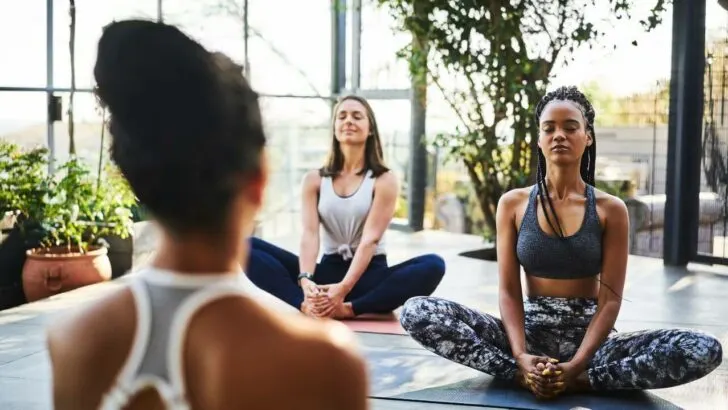So you’ve finished your 200-hour yoga teacher training, or maybe even went all out and did 500 hours at once! You have the knowledge you need to be able to teach yoga but applying to studios or starting a YouTube channel feels intimidating. Maybe thoughts of “I’m not good enough” or “I don’t know enough” start creeping in.
Fast forward a couple of years and you’ve done more training yet you still don’t feel ready. You start asking yourself “Who wants to learn from me?” and “What makes me special?”
Your dream of becoming a yoga teacher and sharing your passion for movement and the oh-so-good feeling you get from your time on the mat dwindles. But you’re not that yoga teacher who lets her dream of being a teacher fall to the wayside. You know your desire to teach is so strong that you simply can’t not do it.
Enter me, Taylor, a 500-hour Yoga Alliance certified yoga teacher who was in your shoes just a couple of years ago. I put off teaching for a year because I was terrified of not being good enough or screwing up and facing judgment from my students. Spoiler alert: You never really know what your students are thinking about you!
These are my top yoga teacher tips for how to start teaching yoga despite the fear, nerves, and anxiety that may arise.
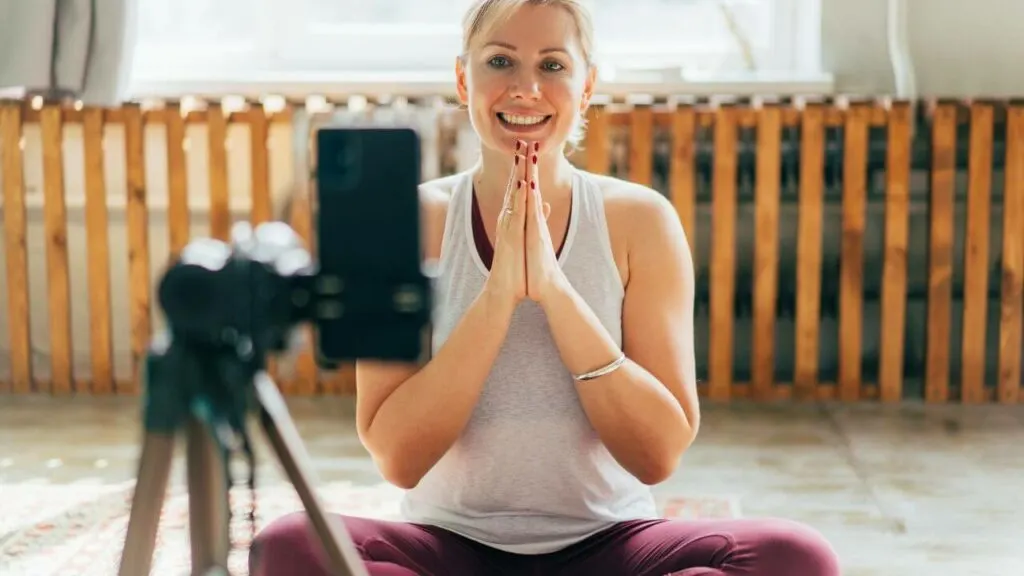
Begin Gaining Experience (From the Comfort of Your Living Room)
You don’t have to start teaching anyone at first. You can start with yourself! Yes, this means creating a sequence and teaching it as if you were your own student. Flow through the sequence speaking your cues out loud to get used to your voice, your pacing, and figuring out what cues work and don’t.
It will not be perfect the first – or maybe even the first few times.
You were most likely required to have created multiple sequences to graduate from your 200-hour training. Start with those sequences. This will help you from becoming overwhelmed and give you zero excuses to get started. There is no need to overcomplicate your first teaching experience.
Eventually, you may begin asking family and friends if you can teach your sequences to them. After or even during ask them if something didn’t make sense, what felt great and what didn’t. Their feedback will begin to guide you to improve your cues and boost your confidence.
Explore Your Core Themes
From my own teaching experience, I pretty quickly recognized that certain themes came up again and again in my teaching. Having a core message or themes that you consistently refer to will help you create sequences with ease, know what kinds of cues to focus on, keep things simple, and begin your following of yoga students who adore you.
For example, one of my key themes is acceptance. This stemmed from my journey of accepting my body just as it is through yoga. I battled a lot of self-hate and loathing, frustration that I couldn’t do certain yoga poses, or that my body didn’t look a certain way. I felt uncomfortable wearing leggings and a sports bra but now rock the outfit as I teach as a way to demonstrate my self-acceptance to my students (and myself!).
That message now comes through in my classes when I encourage students to accept where they’re at on the mat, no matter where they are on their yoga journeys. This can be demonstrated through cues such as, “Choose your desired intensity today,” or “What is your body craving today?” after offering multiple variations of a pose.
Taking a lesson that you learned from your own life and applying it as a message for your students can help make theming so much easier. If still in doubt, or you’re not able to pinpoint a lesson from your own life, then turn towards the chakras.
Do you prefer classes yourself that are more grounding? Then focus on the root chakra. If you like hip opening flows, focus on the sacral chakra. If you love twists, or boosting your students’ confidence, opt to focus on the solar plexus chakra. Heart-centered flows and backends are ideal for the heart chakra. Communication and the idea of using your voice are perfect for a throat chakra focus. Intuition, relieving anxiety or creativity is great for the third eye chakra. And for the crown chakra the idea of connection, a higher power, or enlightenment are awesome themes to focus on.
I recommend choosing 2 to 3 themes or chakras to start, using one per sequence to infuse your classes with. When you have days where you simply don’t know what to talk about or are lacking inspiration, you can always come back to your core themes.
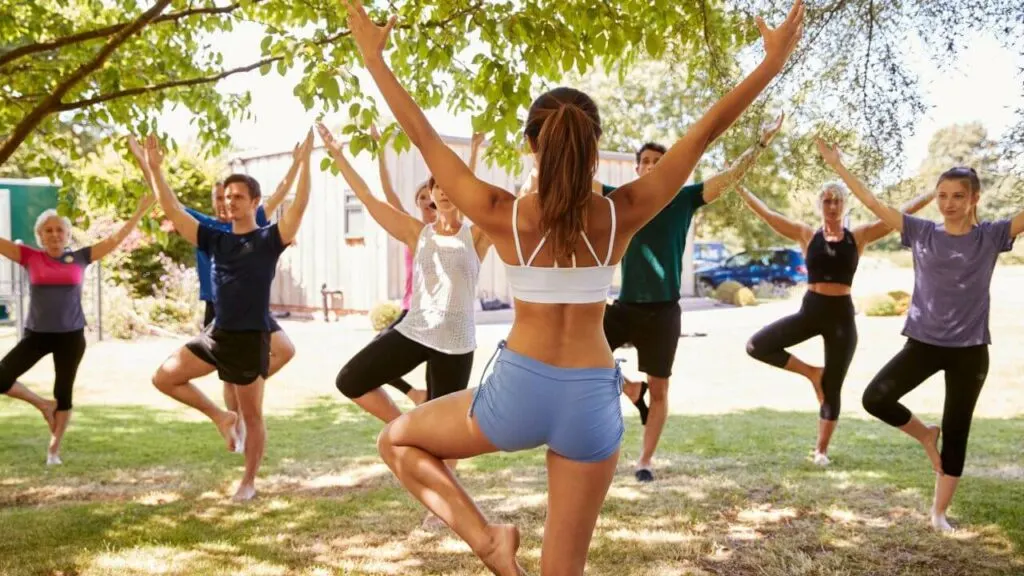
Start with the Basics
During my first 200-hour yoga teacher training when we had to teach our final 20-minute sequence to graduate I was blown away by how complicated my fellow trainees made their sequences. If I, as a new yoga teacher, couldn’t understand what I was being taught, how were students supposed to understand?!
This is why I encourage you to stick with the basics. Not only will it make it easier for your students to follow, but it will get you confident in teaching the basics. You can get fancy later, but avoid the overwhelm and keep things simple to master the basics.
Only when you know the rules and how to teach them well will you then be able to break the rules and get as fancy as you like safely.
If you worry about your students getting bored with your sequence or teaching, remind them that returning to the basics and being a beginner is important in their yoga practice. They’ll be able to focus on their breath more if they’re an advanced yogi or perhaps recognize a thought pattern when they’re not distracting themselves with complicated flows.
You’ll be doing yourself and your students a favor by slowing things down and keeping it simple.
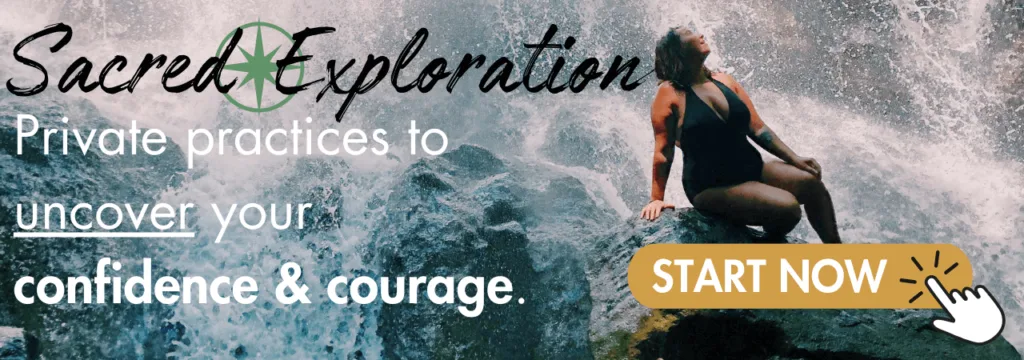
Film Yourself
I know this may feel so cringe to do and it may bring up a lot of self-judgment but I promise it’s worth it! You can critique yourself when you film yourself teaching, you can share the video with studio owners to apply for jobs or you can begin your online teaching career.
I understand that being on camera is not for everyone, but it can be a major confidence booster and is a tool to improve your skills as a teacher and most importantly, get you teaching.
You do not need a fancy camera or even a mic to get started. I began my YouTube channel with only my iPhone to film (and still only use my iPhone) and no mic whatsoever. The quality is not amazing but I uploaded the videos anyway and still have students practicing the sequences.
Starting a YouTube channel will begin your presence online as a teacher without needing to pay anything upfront. And it can be used as a yoga resume. I landed not only my first but also my second studio teaching opportunities because of my YouTube channel.
Film yourself and share!
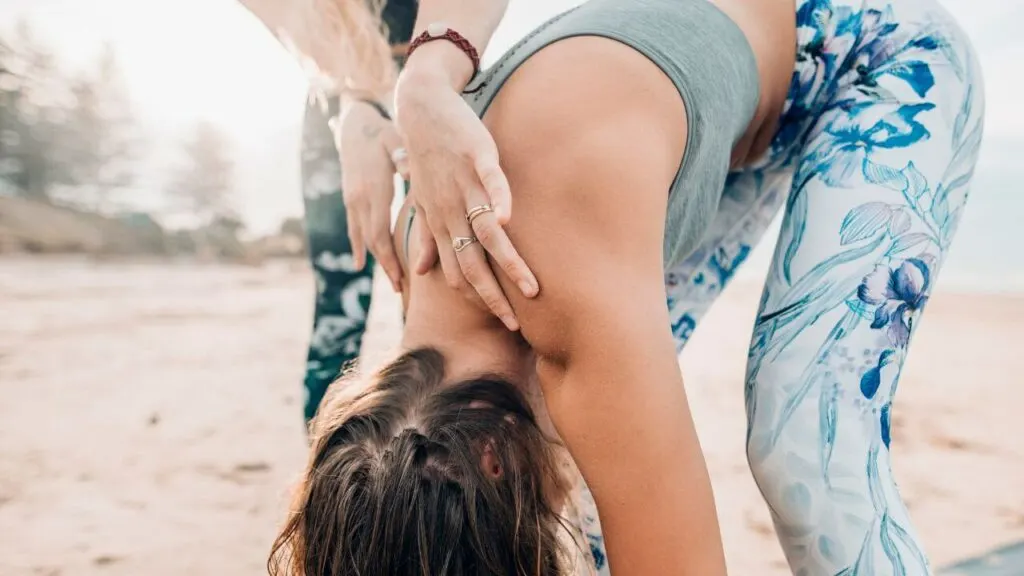
Use Your Network (or Start Creating One)
My first yoga teacher training was small, only 12 people. My network was small and spread across the world. It felt like I was starting from ground zero and I was extremely intimidated to begin reaching out to studios and starting online. I didn’t even know how to start reaching out to people!
I recommend joining local Facebook groups for yoga teachers if you’re interested in teaching in-studio. From one local group in Ottawa, Canada where I teach, I saw a post about teaching in a town I used to live in. I leveraged my knowledge of the area and my YouTube channel to apply without even having a resume! I got the job.
My second job in a studio I got because I mentioned to a friend that I wanted to teach more and she dropped the fact that she knew someone who owned a local studio! I used that connection to reach out and had my second studio job in a week without a yoga resume or doing an audition.
Just yesterday I sent a cold email to a popular yoga studio chain asking if they were hiring. Without sending in a resume I was invited in to practice teach to see if I’m a good fit.
I don’t share these stories to brag but to encourage you to try regardless of your experience or connections because you never know what connections may surprise you or what a studio is looking for.
Your Fears, Doubts & Anxiety are Valid
I know how easy it is for someone who is already teaching to tell you to just start teaching. But if you’re waiting around to feel more confident, like you know enough, or are waiting for an opportunity to fall into your lap, then there are low chances you’ll start teaching.
Students need teachers of all levels. Your 200-hour certification is enough and in some ways may even be an asset as you’ll be a better-suited teacher for beginners!
These emotions like fear, doubt and anxiety are common and ones I have personally dealt with even after I started teaching. This is why I created my yoga and coaching framework for my private students in Sacred Exploration. This program is ideal for you if you want to teach but are doubting yourself, lack confidence, and want to use yoga beyond the mat in your own life and for your students to live authentically, fully, and confidently. Book your first call today to uncover your confidence and courage and be the inspiring yoga teacher you desire to be.
Your next steps:
- Brainstorm 2 to 3 themes you can use in your classes.
- Apply the themes to one of your already created sequences from training as you practice in your living room.
- BONUS: Film yourself and upload it to YouTube!
- Join Sacred Exploration yoga & coaching to ignite your confidence and get you teaching faster!

